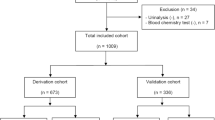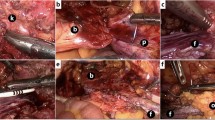Abstract
Since 1973 intermittent catheterisation was introduced in our centre and this practically eliminated pathology of the urethra. More than half of the patients had a high and complete lesion. It is our impression that 5 years following injury more than half of the patients preserved a normal upper urinary tract; however, only 39 of the 92 patients had a follow-up of over 5 years. Nephrolithiasis was rare in comparison to other reports in spite of belonging to the stone belt area. Complications of the lower urinary tract including a 10 per cent incidence of vesico-ureteric reflux were compatible with other series. Narrowing of the external sphincter on voiding cystogram should be substantiated by a profile pressure record. One female patient is a candidate for ileal conduit. Most of the patients have some form of erection but the data on ejaculation should be accepted with reserve. Two patients in this series died more than 10 years after injury, one due to a myocardial infarction and the other due to chronic renal failure following secondary amyloidosis.
Similar content being viewed by others

Log in or create a free account to read this content
Gain free access to this article, as well as selected content from this journal and more on nature.com
or
References
Bors, E & Comarr, A E (1971). Neurological Urology. S. Karger, Basel.
Brown, M & Wickham, J E A (1969). The urethral pressure profile. Brit. J. Urology, 41, 211.
Comarr, A E (1974). Personal communication.
Donnelly, J, Hackler, R H & Bunts, R C (1972). Present urologic status of the World War 2 paraplegic: 25 year follow up. Comparison with status of the 20 year Korean war paraplegic and 5 year Vietnam paraplegic. J. Urology, 108, 558.
Guttmann, L & Frankel, H (1966). The value of intermittent catheterisation in the early management of traumatic paraplegia and tetraplegia. Paraplegia, 4, 63.
Melzer, M (1975). Bladder rehabilitation with Bethanechol. Harefua, 89, 513.
Paz, R (1973). Diagnostic and therapeutic evaluation of cholinergic and anticholinergic drugs on human bladder. M.D. Thesis, Tel-Aviv University Medical School.
Scher, A T (1975). Changes in the upper urinary tract as demonstrated on intravenous pyelography and micturating cysto-urethrography in patients with spinal cord injury. Paraplegia, 13, 157.
Wadewitz, P, Langlois, P J & Bunts, R C (1968). Present urologic status of the World War 2 paraplegic: 20 year follow up. Comparison with status of the 10 year Korean war paraplegic. J. Urology, 98, 706.
Author information
Authors and Affiliations
Rights and permissions
About this article
Cite this article
Melzer, M., Ohry, A., Hertz, M. et al. The status of the urinary tract in a survey of 92 cases with neurogenic bladder. Spinal Cord 14, 213–219 (1976). https://doi.org/10.1038/sc.1976.37
Issue date:
DOI: https://doi.org/10.1038/sc.1976.37


